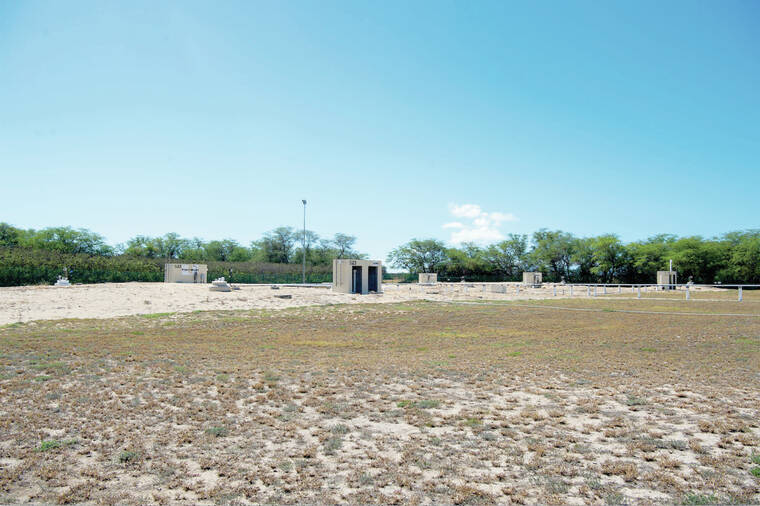BARKING SANDS — As the U.S. Navy moves on its plan to defuel the Red Hill fuel tanks that contaminated the Pearl Harbor drinking water supply last year, the Pacific Missile Range Facility has released more details on plans to decommission its own aging fuel tanks.
The facility is home to nine World War Two-era underground fuel tanks, four of which are currently inactive. Starting next year, they plan to begin the work of de-fueling all five active tanks — which are currently used to dispense fuel for three PMRF turboprop planes and two helicopters, along with any visiting aircraft.
Facility spokesperson Petty Officer 2nd Class Samantha Jetzer said the project is slated to begin in fiscal year 2023, through contractor NAVFAC – Hawai‘i.
”The overall fuel capacity will decrease as each (tank) is de-fueled, taken out of service, and demolished — but will be consistent with expected mission requirements,” Jetzer said.
“They’re older, so they wanted to update them.”
The cost to demolish the remaining five tanks is estimated at $2 million, Jetzer said. Design funds for the project have already been provided through the Defense Logistics Agency Energy, though they are still waiting on full funding.
Jetzer said they planned to start by decommissioning one of the fuel tanks next year, but they have not yet set a timeline for the decommissioning of the other four.
The threat posed by the tanks is far less significant than those posed by the Red Hill facility.
The Red Hill facility sits just 100 feet above one of Honolulu’s most important drinking water aquifers, a location that had disastrous consequences when two major fuel spills occurred in May and November 2021.
Shortly after the November spill, residents began to complain of a smell of fuel in their drinking water. Nearly
6,000 people near the base — mostly military personnel and their families — sought medical attention for rashes, sores, nausea, and other ailments after using the diesel-contaminated water.
The incident has sparked a lawsuit against the U.S. government in which more than 100 people attribute health problems to the spill, and led to the Navy announcing plans to shutter the facility by 2027.
PMRF tanks are not located near an aquifer,
and thus don’t present the same sort of threat to drinking water.
“There’s no aquifer under these tanks, so it’s not as urgent,” said Kip Goodwin, founder of the Kaua’i Alliance for Peace and Social Justice, a frequent critic of military activity on the island.
“They were built back in the 1940s — and it would seem like the prudent thing to do to empty them.”
PMRF tanks also hold far less fuel than Red Hill.
Red Hill’s 18 active tanks can each store 12.5 million gallons of fuel, while PMRF’s tanks max out at 51,000 gallons and are not filled to capacity.
A 2016 report to the legislature showed there had been no fuel releases at PMRF storage facilities.
With the de-fueling of Red Hill, these PMRF tanks will be the only fuel tanks of their kind to operate on the islands.




